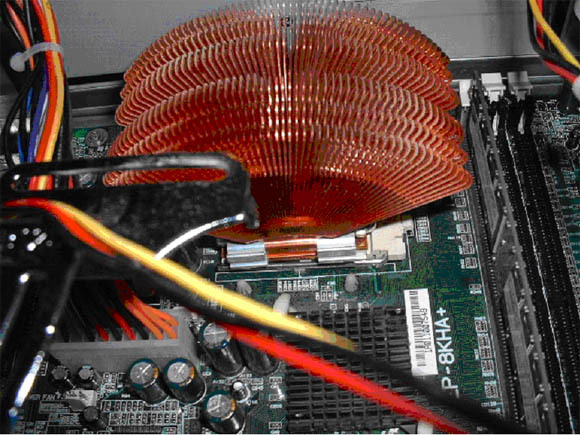Reader How Tos: Building For Stability
Features
By
Tim Reynolds
published
Add us as a preferred source on Google
Specifics, Continued
- Heat Sink and Fan (HSF)
I have read many HSF reviews and have not found one that puts the decision for selection in my kind of English. I believe the choice of HSF depends on requirements for power dissipation, noise, overclocking and size. My view on the noise aspect of CPU fans is simple - the smaller it is and the faster it spins, the more likely it is to be noisy. I generally go for a HSF with >80mm low RPM fans as a starting point, and because 80mm is a standard size, it allows me to try different 80mm fans. I can personally recommend the "Zalman Flower," as it has a 90mm fan mounted on the chassis with external speed adjustment, and is an excellent quiet solution (I only name this one as I am not aware of a similar product).
Overclocking a processor will usually increase the power dissipation beyond the rating of an equivalent standard part, usually because I have increased the core voltage. Finally, heat sink application seems to be often misunderstood, and I have lost count of the number of heat sinks I have reseated. My mounting method is simple: first, clean both processor and mating face of HSF (to the bare metal) with alcohol and use a clean, "lint-free" cloth. (I have found that paper towels work fine!) Apply the heatsink compound to the mating surface of HSF, and wipe in order to fill microscopic cavities, gently removing any excess. Using a razor blade, apply a uniform coating of compound to the processor, just thick enough so you can't see through it. When fixing the HSF to the processor, try to stop the HSF from moving once it has been mated with the processor, and apply the fixing clip carefully. I do believe the polymer resin compounds (e.g., Artic Silver) will perform better due to the nature of physics, but how significant the performance difference is remains unclear to me. Generally, I take my time and maybe try several attempts to get used to how heat sink behaves, as heat sink compound is very cheap!
The Zalman Flower; overhead fan mounting not shown. Note that Northbridge chipset fan can be removed!
- Chassis Fans
An exhaust extraction fan is almost essential to reduce and maintain a constant system temperature. I present this as an 80mm fan mounted to the rear of the case (most cases have holes and fan template already). One exhaust extraction fan is all I have ever found to be necessary, as a front inlet fan does not significantly improve cooling. I believe this has to do with the air pressure in the case. An optional voltage regulator to control fan speed and, thus, noise is an excellent addition, allowing you to fine-tune the fan speed to the optimum noise/cooling balance. A 12V speed controller can be bought commercially or made from four components. The description of how to do this is outside the scope of this article, but the 7805 regulator data sheet has the information required for an "increased voltage regulator." Be careful, however, as the fan may not start up correctly if the voltage is below its minimum requirement (approximately 7V).
Fan Speed regulator. The commercial product is £10 (about $14); I made mine for £1 (about $1.40).
The selection of a chassis fan based on manufacturer and rating will have a big impact on noise and cooling performance. As a general rule, I recommend buying from the large, established fan manufacturers, who built fans long before the advent of the PC!
Stay On the Cutting Edge: Get the Tom's Hardware Newsletter
Get Tom's Hardware's best news and in-depth reviews, straight to your inbox.
TOPICS
No comments yet
Comment from the forums

